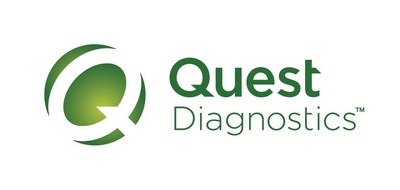Chlamydia and Gonorrhea Positivity Surges in Women Ages 18-30 Years, Finds Quest Diagnostics Health Trends Study
Quest Diagnostics' new Health Trends study reveals that between 2010 and 2017, positivity rates for chlamydia and gonorrhea among women aged 18-30 surged significantly. The annual positivity rate for chlamydia rose by 18% (from 4.9% to 5.8%), and for gonorrhea, it increased by 33% (from 0.7% to 0.9%). The study, based on nearly 18 million lab results, indicates a shift in infection rates toward older women, suggesting that current screening guidelines may be outdated. It calls for expanded access to testing for women over 24 years old to address rising infection rates.
- Annual chlamydia positivity rate increased by 18% from 4.9% in 2010 to 5.8% in 2017.
- Annual gonorrhea positivity rate increased by 33% from 0.7% in 2010 to 0.9% in 2017.
- Positivity rate for women aged 25-30 increased by 50% during the study period.
- Positivity rates for chlamydia and gonorrhea have shifted towards older ages, indicating potential misalignment with current screening guidelines.
- Women over 24 may be prematurely aging out of access to annual screening, risking undetected infections.
Insights
Analyzing...
SECAUCUS, N.J., Sept. 3, 2020 /PRNewswire/ -- The rate at which women 18-30 years of age tested positive for the two most common reportable sexually transmitted infections grew by double digits between 2010 and 2017, finds an analysis of nearly 18 million de-identified test results from Quest Diagnostics (NYSE: DGX).
The new Health Trends® study from Quest Diagnostics is believed to be one of the largest to examine rates of clinical laboratory test results for Chlamydia trachomatis (chlamydia) and Neisseria gonorrhoeae (gonorrhea) on a national scale. The study examined 17,794,680 co-testing laboratory results for both infections from females aged 12–30 years tested at Quest Diagnostics during 2010–2017.
The study is available in the American Journal of Preventive Medicine (AJPM) online ahead of print here.
In addition to showing sharp increases in the positivity rates of chlamydia and gonorrhea, the study also found that the positivity rates of both infections shifted toward older ages over the eight-year study period. This observed shifts in age-based risk is significant because it raises the prospect that current medical guidelines for screening are not aligned with the sexual behaviors of, and associated risk of infection in, women in the United States.
Guidelines from the Centers for Disease Control and Prevention (CDC) and the U.S. Preventive Services Task Force (USPSTF) recommend annual screening for both infections in all sexually active women younger than 25 years of age. Screening in women 25 years of age and older is recommended only for those with certain risk factors, such as a new or multiple sexual partners or inconsistent condom use.
Yet, according to the study, the positivity rate for chlamydia for 27-year-old women in 2017 (
Overall, the peak age of positivity for both infections increased by one to two years and, in test results at the farthest distribution, by 3 to 7 years for chlamydia and gonorrhea respectively, over the eight-year study period.
Infections with chlamydia and gonorrhea often lack symptoms and, left untreated, may result in pelvic inflammatory disease and infertility.
"Our Health Trends data shows that sexually transmitted infections do not discriminate by age," said lead researcher Harvey W. Kaufman, M.D., Senior Medical Director and Director, Health Trends Research Program at Quest Diagnostics. "When a sexually transmitted infection goes undetected and untreated, the result can be long-term health problems such as infertility and unknowing transmission of the infection to others. Sexual behaviors have changed in the United States, and guidelines need to reflect that women may be spending longer periods of time being sexually active and with more partners prior to childbearing than in the past."
Among the key findings:
- The annual chlamydia positivity rate increased by 18 percent overall (
4.9% in 2010 to5.8% in 2017), while annual gonorrhea positivity increased by 33 percent overall (0.7% in 2010 to0.9% in 2017). - Although women ages 18-24 were more likely to test positive for either infection, women 25-30 years of age experienced a higher increase over the 8-year period. Among women 25-30 years of age, the positivity rate increased by 50 percent (from
2.2% in 2010 to3.3% in 2017), compared to women in the 18-24 age group, at 21 percent (6.1% to7.4% ). - Among the youngest (12-17) age group, the positivity rate declined 17 percent for chlamydia (
8.9% in 2010 to7.4% in 2017) and 14 percent for gonorrhea (1.33% in 2010 to1.17% in 2017).
"Our analysis raises the possibility that some women in the United States are prematurely aging out of access to annual screening, given current guidelines," said co-author Damian P. Alagia, III, M.D., Senior Medical Director of Woman's Health for Quest Diagnostics. "As such, women over the age of 24 years can only access testing if they are symptomatic or labeled 'high risk' by their healthcare provider following a potentially uncomfortable dialogue about their sexual behavior. Given changing sexual mores, a more thoughtful and inclusive population screening approach supporting screening access for women above the age of 24 years is overdue."
The study, "Chlamydia and Gonorrhea: Shifting Age-Based Positivity among Young Females, 2010-2017," is available at: https://www.sciencedirect.com/science/article/pii/S0749379720302713#!
Approximately 1,760,000 cases of chlamydia and 583,000 cases of gonorrhea infections were reported to the Centers for Disease Control and Prevention in 2018.
About Quest Diagnostics
Quest Diagnostics empowers people to take action to improve health outcomes. Derived from the world's largest database of clinical lab results, our diagnostic insights reveal new avenues to identify and treat disease, inspire healthy behaviors and improve health care management. Quest annually serves one in three adult Americans and half the physicians and hospitals in the United States, and our 47,000 employees understand that, in the right hands and with the right context, our diagnostic insights can inspire actions that transform lives. www.QuestDiagnostics.com.
![]() View original content to download multimedia:http://www.prnewswire.com/news-releases/chlamydia-and-gonorrhea-positivity-surges-in-women-ages-18-30-years-finds-quest-diagnostics-health-trends-study-301123929.html
View original content to download multimedia:http://www.prnewswire.com/news-releases/chlamydia-and-gonorrhea-positivity-surges-in-women-ages-18-30-years-finds-quest-diagnostics-health-trends-study-301123929.html
SOURCE Quest Diagnostics








